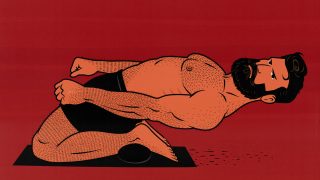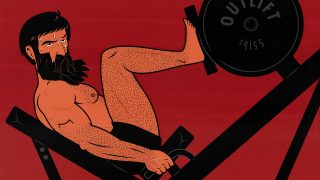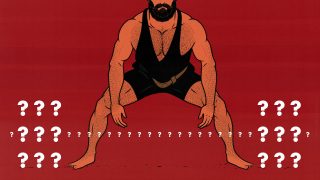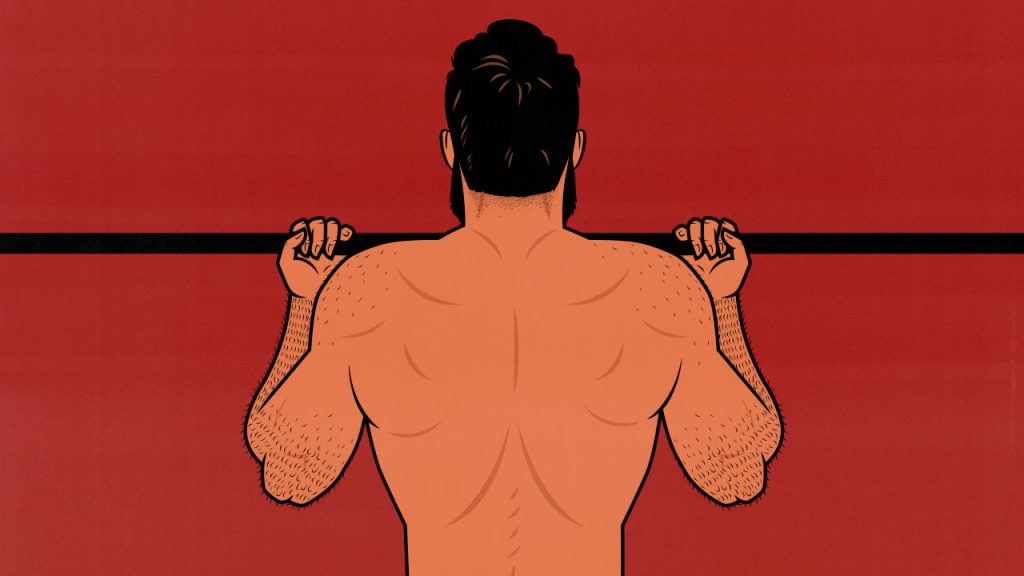
The Best Pull-Up Alternatives (for Building Muscle)
Pull-ups are one of the very best back exercises, rivalled only by chin-ups and deadlifts. The problem is not everyone can do them. Some people aren’t strong enough. Others don’t have a pull-up bar. Fortunately, there are near-perfect alternatives. You won’t miss out on anything.
Over the past twelve years, we’ve helped over ten million readers and over ten thousand clients bulk up their backs with or without pull-ups. They’re a great exercise, but you don’t need them.
Without further ado, let’s talk about what the pull-up does and how to replace it.
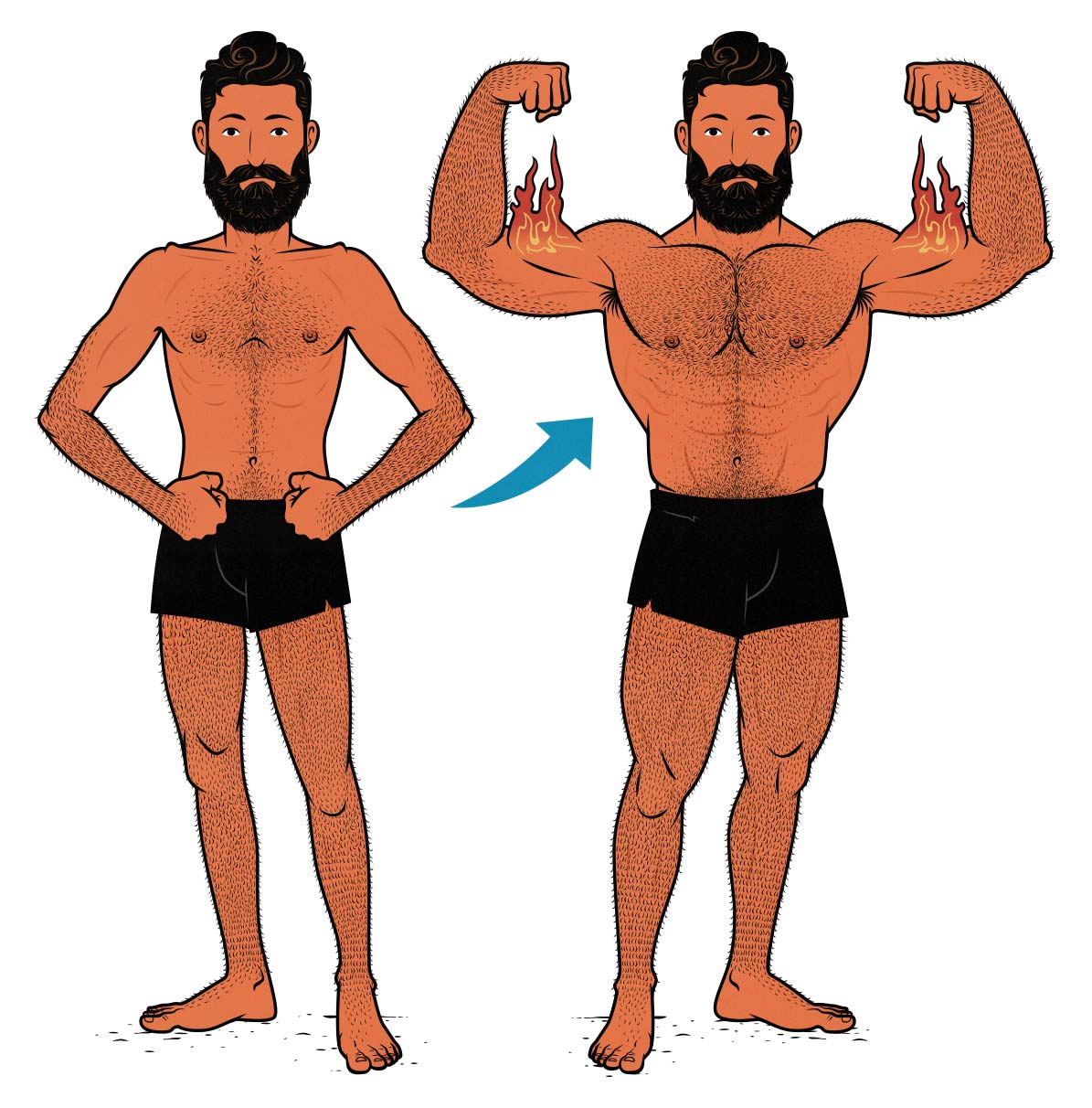
What Muscles Do Pull-Ups Work?
The pull-up is a big compound lift that trains almost all the muscles in your back. That includes your traps, rhomboids, rear delts, rotator cuff, and lats. Perhaps surprisingly, pull-ups are also one of the best exercises for bulking up your abs.
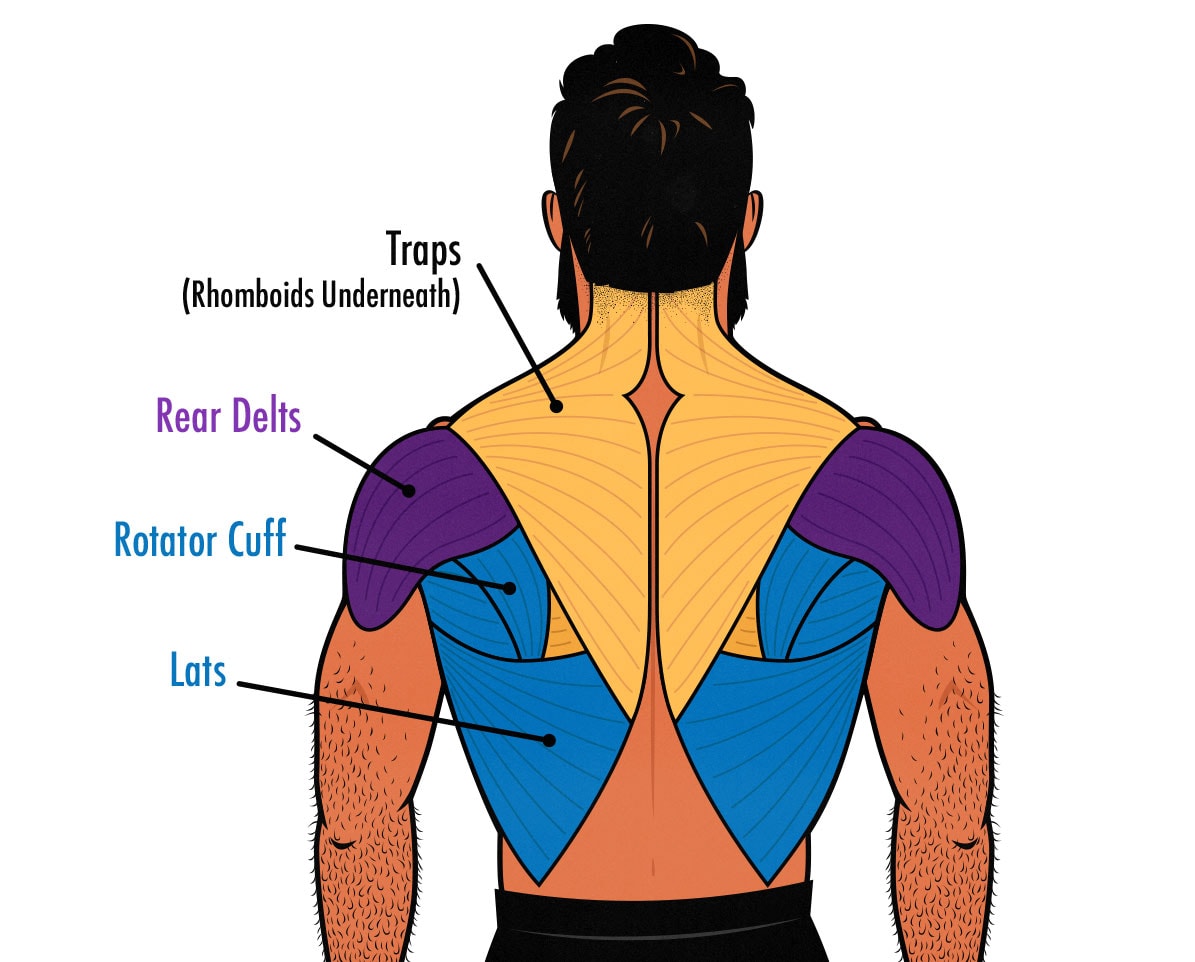
If you wanted another big back exercise that stimulates even more muscle growth, you could look to deadlifts. But that’s a different lift that emphasizes different muscles, such as your spinal erectors and hips. Most workout routines will include both, and rightly so. Deadlifts are a great exercise, but they aren’t a great replacement for pull-ups.
What makes pull-ups special is that they train your lats under a deep stretch, which is fantastic for stimulating muscle growth (article). Few exercises are able to rival that range of motion. That’s why pull-ups are so prized. That’s a feature we want to look for when finding alternatives.
If You Aren’t Strong Enough for Pull-Ups
If you aren’t strong enough for pull-ups, there are plenty of exercises that work your back muscles in a similar way: rows, deadlifts, pullovers, and all kinds of other exercises. However, we want that big lat stretch that pull-ups are so good for. That gives us two great alternatives.
Chin-Ups (Maybe)
If you’re almost strong enough to do pull-ups, chin-ups are the exercise you want. You do them with a narrower, underhand grip, letting you bring your arms into the lift, making the exercise easier. You get all the benefits, and they help you build bigger biceps.
The catch is that chin-ups are still pretty tough. You still need to be able to lift your body weight. You might not be able to do them. In that case, skip to the next exercise.
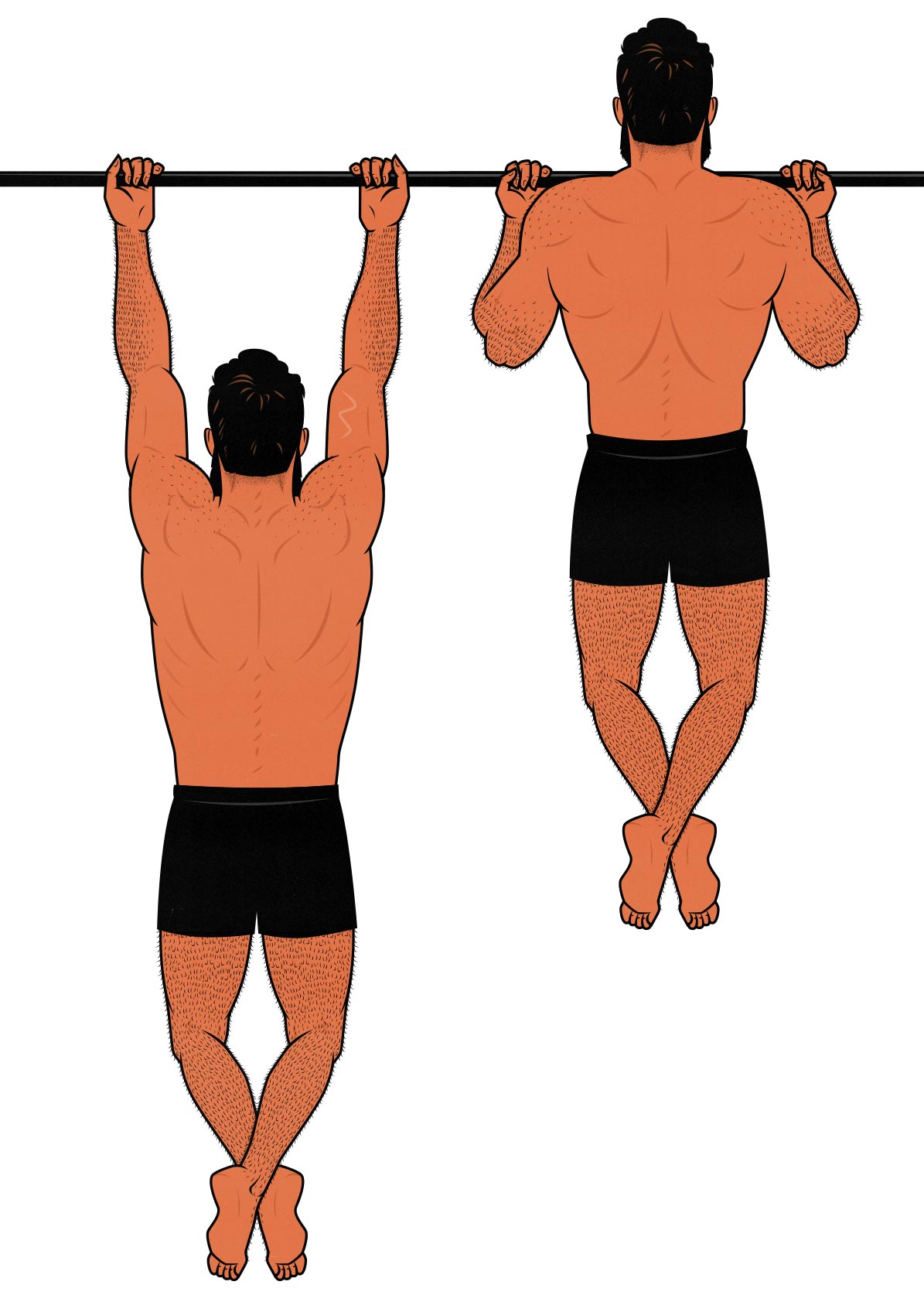
Here’s how to do chin-ups:
- Most experts recommend doing chin-ups with a “hollow body,” where you brace your abs and hips, becoming like a log or perhaps a crocodile. That makes for a great default. If you know what you’re doing, feel free to lift your knees or arch your back or otherwise customize the exercise to suit you better.
- Reach up as far as you can, stretching out your back muscles. This is the whole point of chin-ups and pull-ups. The stretch is growth. The stretch is life.
- Brace your abs and give yourself a proud chest.
- Pull yourself up to the bar, ideally touching it to your chest.
- Lower yourself slowly back down until you feel a deep stretch.
- Repeat for as many repetitions as you can.
Every workout, try to do more reps than you could do before (progressive overload). If the rep range gets painfully high, feel free to use a weight belt, a weight vest, or tuck a dumbbell between your legs.
Lat Pulldowns (Definitely)
If you aren’t strong enough for pull-ups, the best alternative is the lat pulldown. It’s the exact same movement pattern, but you have complete freedom over how much weight you use, making it much more versatile. That makes lat pulldowns great for beginners, as well as for big people with heavy bodies.
The catch is that lat pulldowns aren’t as good at training your abs. You’ll need to train them separately. You can do that with planks or crunches.
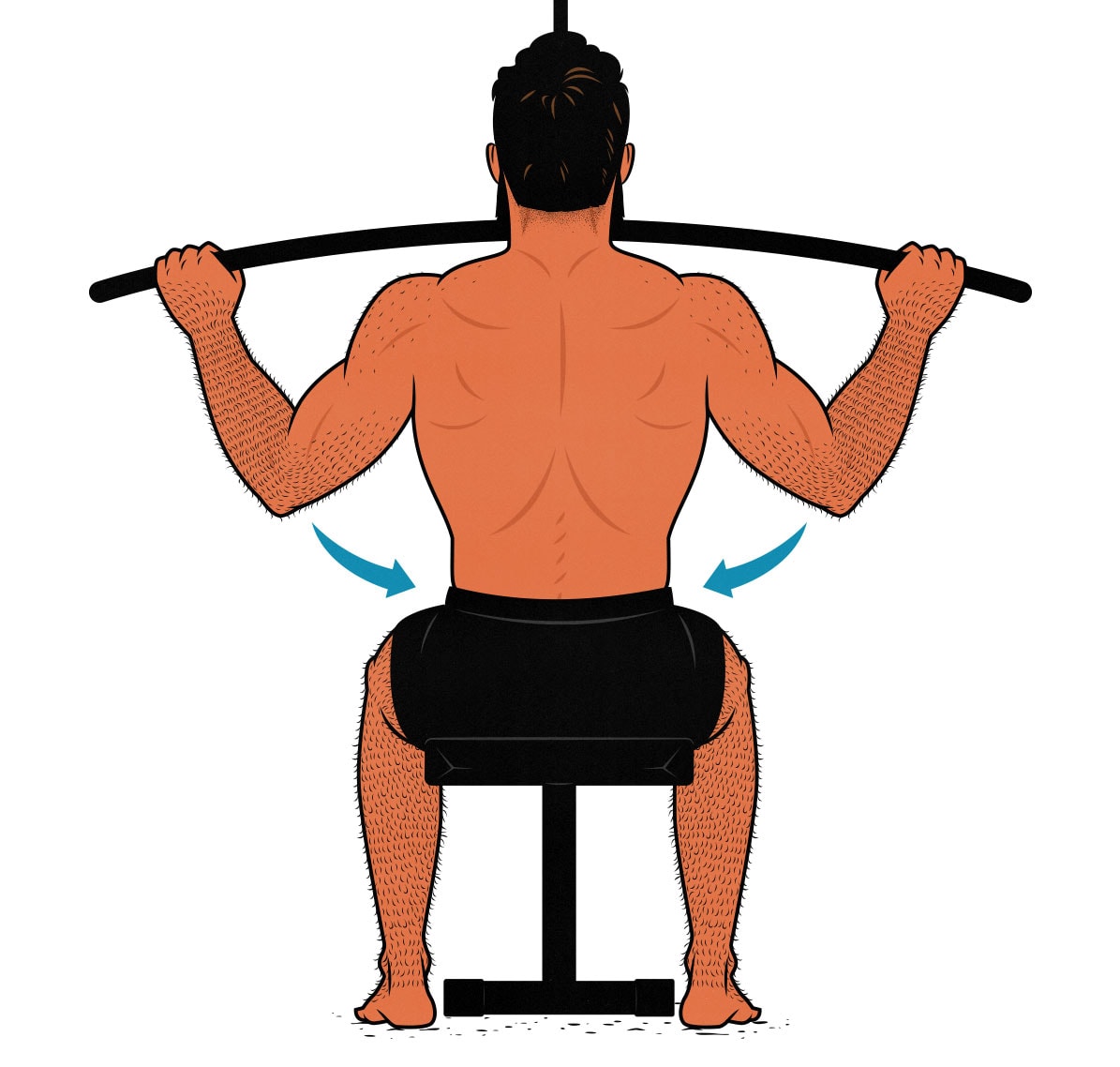
Here’s how to do lat pulldowns:
- Lock your legs into the machine, giving you something to brace against.
- Reach up as far as you can, stretching out your back muscles.
- Brace your abs and give yourself a proud chest.
- Pull the bar down, ideally all the way to your chest.
- Guide the bar slowly back up until you feel a deep stretch.
- Repeat for as many repetitions as you can.
Aim for 3–4 sets of anywhere from 6–20 reps. Every workout, try to lift a little bit more weight or squeeze out more reps.
If You Don’t Have a Pull-Up Bar
If you don’t have a pull-up bar, you can’t replace them with chin-ups. You probably aren’t training at a gym, either, meaning you won’t have access to a lat pulldown machine. That makes things harder. We can’t perfectly mimic the movement pattern anymore. Fortunately, there are still plenty of other exercises that work the same muscles.
Dumbbell or Barbell Rows
Pull-ups work your upper back, lats, and abs. Rows work your upper back, lats, and spinal erectors (if you don’t support your back). The downside is that you’ll need to train your abs separately (with planks or crunches). The upside is that you’ll do a much better job buffing up your spinal erectors.
The trick is to row with a relatively narrow grip, keeping your elbows tucked in fairly close to your body, helping to engage your lats.
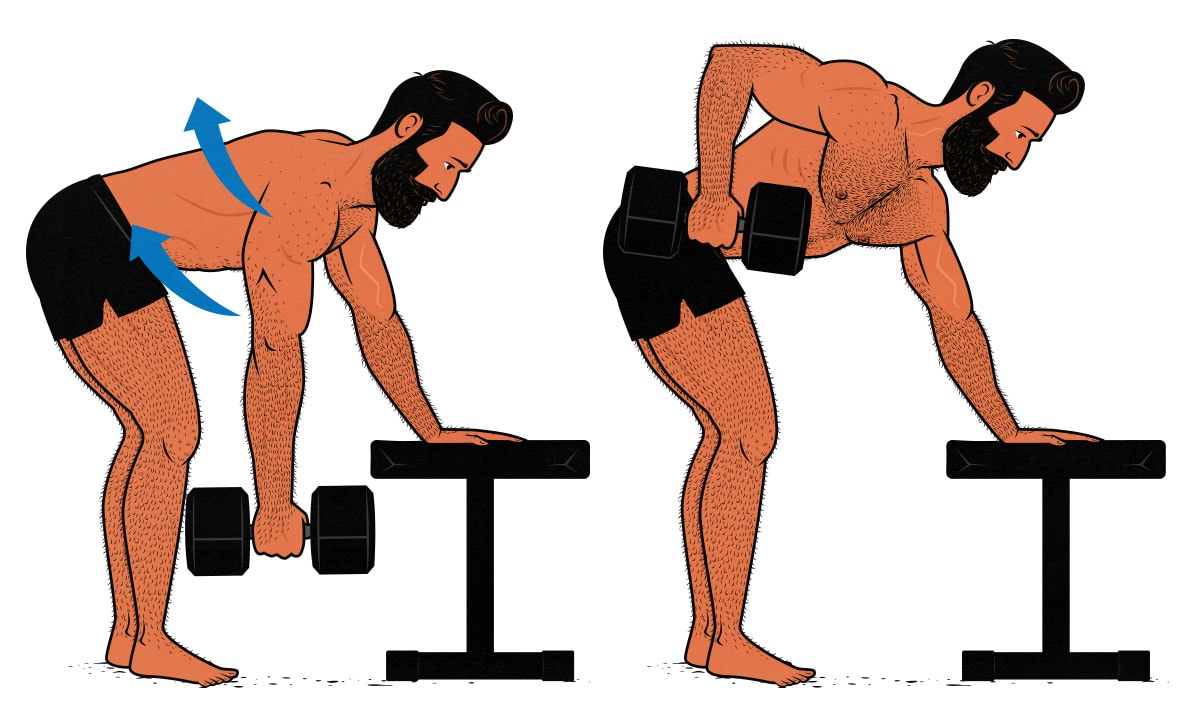
Here’s how to do dumbbell rows:
- Get into a hinge position as if you were doing deadlifts. Feel free to brace your hand on a bench, but you don’t have to.
- Reach out as far as you can, stretching out your back muscles.
- Drive your elbows back towards your hips, keeping them close to your body.
- Lower the weight slowly until you feel a nice deep stretch again.
- Repeat for as many repetitions as you can.
Aim for 3–4 sets of anywhere from 10–20 reps. Every workout, try to lift a little bit more weight or squeeze out more reps.
Dumbbell or Barbell Pullovers
Pullovers are the closest free-weight alternative to pull-ups. They work your lats under a deep stretch and through a similar range of motion. They won’t work your core as hard, but they make up for it by being more challenging while your lats are under a deep stretch, which is amazing for building muscle. In this way, pullovers are even better than pull-ups.
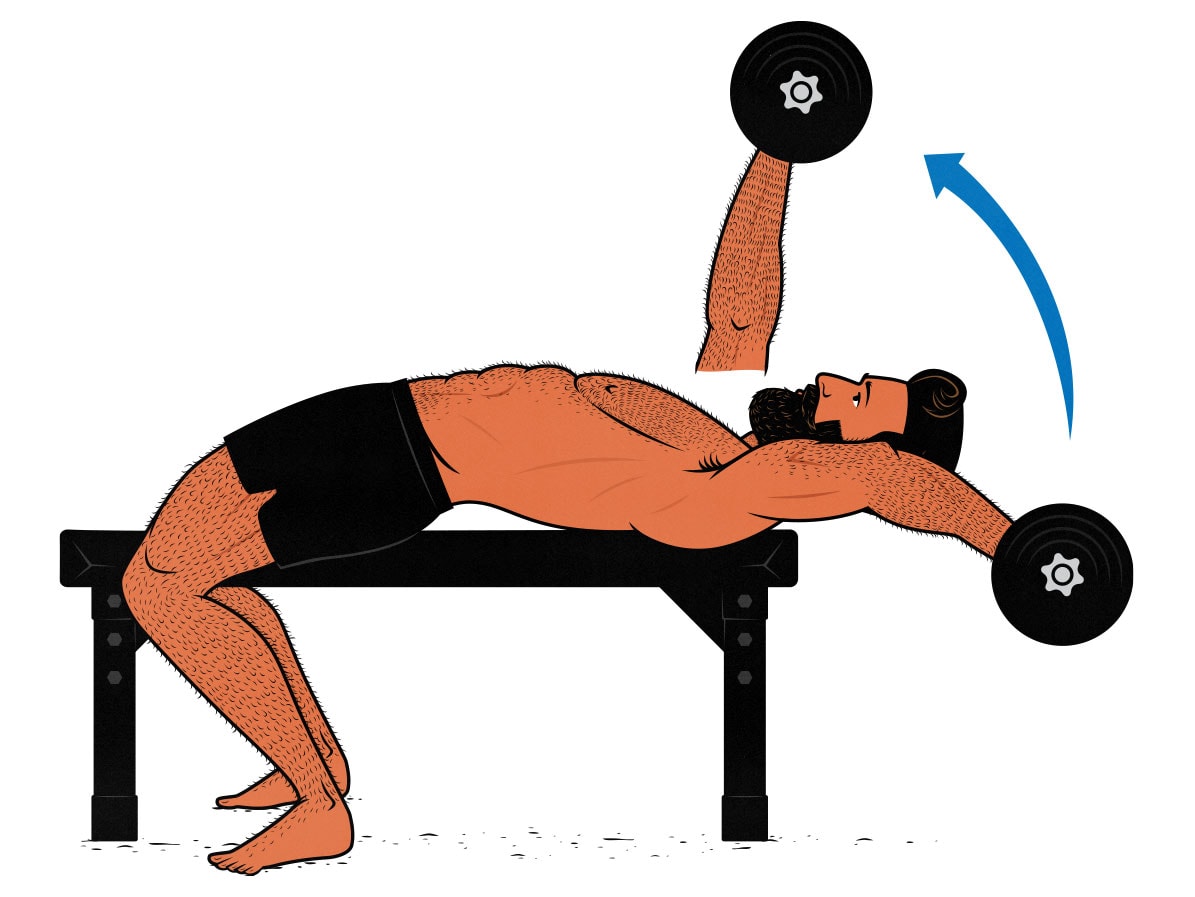
Here’s how to do pullovers:
- Grab the weight first, then lie down on a bench. You can lie across the bench if you prefer, but most people find it easier to rest their hips on the bench.
- Press the weight up and then lower it down behind your head. Keep a slight bend in your elbows so your triceps don’t take over. Lower the weight until you feel a beautiful stretch on your back muscles.
- Lift the weight until it’s above your head, then lower it slowly back down again.
- Repeat for as many repetitions as you can.
Aim for 2–4 sets of anywhere from 10–20 reps. Every workout, try to lift a little bit more weight or squeeze out more reps.
If You’re Training At Home
If you’re training at home, all you need to do pull-ups is a pull-up bar or gymnastic rings. Rings cost almost nothing, you can set them up anywhere, and they have the added advantage of letting your wrists rotate freely, which is great for warding off joint pain.
As an added advantage, if you aren’t strong enough to do pull-ups, you can set the rings lower to the ground and let some of your weight rest on the floor, doing inverted rows.

These gymnastic rings from Rogue are great. I bought all my home gym equipment from Rogue before we became affiliated with them. They’re the best in the world at making barbells and squat racks. Mind you, gymnastic rings are much simpler to make. Many of the cheaper options are perfectly fine. Just make sure you get wooden rings. The metal and plastic ones get too slippery, especially if you’re sweating.
Summary
The pull-up is a big compound lift that will bulk up your back and abs. It’s especially good for working your lats, which is why many people love it.
- If you’re looking for a big compound back exercise, do deadlifts.
- If you aren’t strong enough for pull-ups, do chin-ups instead.
- If you aren’t strong enough for chin-ups, do lat pulldowns instead.
- If you only have dumbbells, do dumbbell rows and pullovers.
- If you only have a barbell, do barbell rows and pullovers.
- If you’re training at home, get some gymnastic rings.

Alright, that’s it for now. If you want more muscle-building information, we have a free muscle-building newsletter. If you want a customizable workout program, check out our Outlift Intermediate Bulking Program. We also have our Bony to Beastly (men’s) program and Bony to Bombshell (women’s) program for skinny and skinny-fat beginners.



